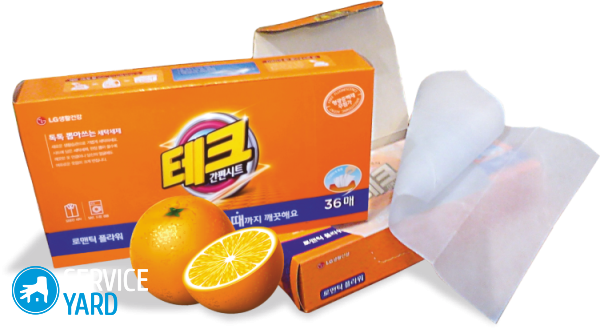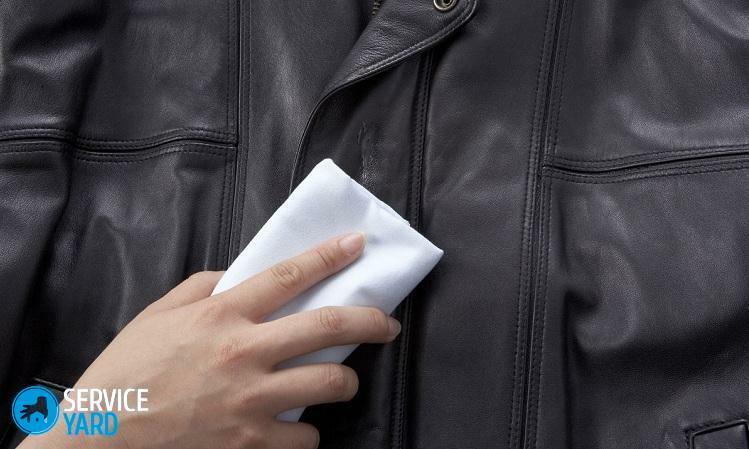When the autonomous organization of heating, it is necessary to solve several important issues. Before proceeding to the design of the heating system, you should determine the choice of heating equipment, what kind and type of heating equipment preferred. the problem is solved simply enough in the situation with gas boilers. Consider the case where natural gas use is not possible when you have to make a choice in favor of the solid fuel boiler.

We will understand with what boiler is best suited to a given situation, what model of solid fuel boiler selected as the optimal source of heat for home heating.
What choice based solid fuel boiler
Criteria for selection of heating equipment
Solid boilers are now experiencing the peak of popularity. All the fault, rising prices for gas and electricity. The user is trying to find other types of fuel, solving their own domestic problems. In addition, large-scale suburban construction is currently going so rapidly, that the activities a centralized gasification of settlements, are not able to provide cooking gas potential consumers.

Opting for solid fuel boilers - is not accidental. For a large group of citizens to get coal, peat or wood for home purchase system heating cheaper and easier than to organize independent heating system to natural gas. Depending on the region, it depends on the availability of each type of fuel. In addition, the current models of boilers for solid fuels are not less efficient than gas-fired boilers in operation.
Assessing the situation, choosing a model of heater, it is necessary to have a clear idea of what are the selection criteria. Will you meet the traditional models of solid fuel boilers or for you to choose from solid fuel boilers long burning is the best solution to the problem.
The most important criteria that should be targeted, standing in front of a choice, the following:
- availability of fuel;
- the desired power of the boiler;
- simplicity and ease of use of heating devices.
Fuel for the boiler - a key point
The first and most important point, which is the key and from the implementation of which depends on the following criteria, it is the question of fuel. has its own priorities in terms of fuel for each region. In the central and northern parts of the country the most affordable type of fuel is wood and peat. Wood, wood products and peat sufficiently may well solve the problem of supply of fuel home heating system in the private sector. A lot of means and cost of such fuels. For most citizens, wood, peat briquettes are traditional kind of stove fuel, and in our days.

In the southern regions of the country consumers are more focused on coal. This fuel has high processability and debugged the boiler gives excellent results. Solid fuel boilers of various kinds, designed for the use of coal, capable of providing heat and hot water large residential buildings, industrial buildings and to heat buildings. Created supply of coal for the winter is quite able to guarantee you a quality heating for a long period.
In conclusion it should stop a little on the new types of fuel, which is used for solid-fuel boilers. It is about pallets and fuel briquettes. Pallets are very convenient and practical form of fuel, which is based on practical use of industrial wood products.
On a note: The situation is similar with charcoal and peat. The resulting enrichment of the desired concentration and shape. Coal, peat briquettes and pellets in the combustion process give a great amount of heat is 20-30% more than conventional fuels in traditional form.
Pallets, coal briquettes are ideal for heating systems in cottages and country houses. The price of this fuel is slightly higher in comparison with coal and firewood, but, in this case in the first place there is the convenience of use.
Power coal-fired boiler
When the fuel issue has been resolved, you are now more clearly than in the main have a stand-alone boiler to heat, it is necessary to solve the problem with the selection of the required power model. In this regard, the choice is individual and depends on specific conditions and factors. Get information about the boiler equipment capacity can be in the specification. For those who are poorly versed in the technical specifications and parameters of heating equipment can be offered to perform the necessary calculations of power coal-fired boiler. We are using for this purpose the following data:
- heated space area;
- technical readiness of the premises in terms of thermal insulation;
- required temperature parameters indoors;
- what kind of fuel is used.
For instance: We expect power coal-fired boiler Heating a mansion in two floors, the dimensions of 10 meters by 7 meters. Take the interior height of 2.5 m. As a result we obtain 2 x 10 x 7 = 140 m2 - total heated area of the building. Traditionally considered to be: for heating 10 m2 It needs to 1kW power.
Now, for what would have to choose the boiler capacity, see table
| power, kWt | 10 | 14 | 16 | 20 | 23 | 25 | 28 | 34 | 45 |
| Area, m2 | 85 | 120 | 135 | 170 | 200 | 220 | 245 | 300 | 400 |
For reference: such calculations are approximate and are more suitable for the old houses built. In modern residential buildings where insulation is high enough power take solid fuel boilers in stage 1 below. Also not taken into account unheated utility rooms, and it's still minus 15-20% of the total area of the building.
Other parameters of the boiler equipment, which should pay attention
What should be the thrust - natural or forced?
technology and High system efficiency heating depends not only on the type and capacity of the solid fuel boiler, but also on the ventilation device. Link for all of the heating equipment where there is an effect of combustion is a key factor.

In the area where frequent problems with power supply, commonly used heating system with natural ventilation. Solid fuel boilers in this case operate by natural circulation air mass - on the principle of heating furnace. Another issue that the efficiency and effectiveness of this type of heating is poor. Modern solid units are equipped with electrical devices responsible for a constant supply of air to the combustion chamber. Forced ventilation substantially increases the intensity of combustion of the fuel, increasing the efficiency of the boiler.
Important! Modern solid fuel boilers are equipped with automatic, which is responsible for the workflow, controlling not only the supply of air to the furnace, but also the level of unburned gases in the boiler room.

In this situation, the choice of the boiler model defines not only the efficiency of the heating system, but also the safety of the inhabitants of an apartment house. Boilers with natural ventilation are of simple design and easy to operate. Equipment with automatic, takes control of all basic functions for yourself. In this regard, such boilers are easier to use, however, and they are more expensive than traditional boilers.
Efficiency coal-fired boiler
The boiler output, fuel type, the size of the heated area play in terms of choosing a key role. Despite technological advances, consumers are continuing to focus on the efficiency of heating appliances.
For older models of efficiency does not exceed 75-80%, disappointing figures. In other words, 20-25% released in the combustion process takes heat in the literal sense, in a tube. Today, many manufacturers have managed to achieve a significant increase in efficiency for solid fuel boilers. Choosing the boiler now becomes much easier if you know the constructive power of the boiler and its efficiency.
Currently, solid fuel boilers have an efficiency level of 90-95%. Such parameters efficiency heaters managed to get by reducing the moisture content of fuel, applying a fundamentally new scheme combustion and combustion chamber design features boiler. Despite the fact that the models with high efficiency boilers are expensive, opt for these models is quite justified and substantiated. With less fuel consumption, you will get the desired flow temperature.
Exchanger - steel or cast iron
The process parameters and power efficiency, fixed in the datasheet for the heating equipment must be supplemented with data about the material from which the heat exchanger is made.
Basically today in the manufacture of heat exchangers for solid fuel boilers are used steel and cast iron. Materials characterized by high thermal characteristics, strength and durability. Talking about what choice is better, steel or cast iron heat exchanger may be specifically in each case.
For reference: iron products have several sections, which can be changed separately if necessary. Cast iron coil burns faster at high temperatures, but less prone to corrosive processes. Cast iron is afraid significant temperature changes, so the cleaning of boilers must wait for complete cooling of the heating element.
Cast iron boilers are more expensive than steel appliances.

Steel heat exchangers in this regard, practical and convenient. Steel easily tolerate large temperature swings. The most significant disadvantage of susceptibility to corrosion of steel water-heating circuit. However, in cases where the use of steel heat exchangers with a wall thickness of 6 mm or more, such boiler will last much longer.
The size of the combustion chamber and fuel feeding means
Not be discounted and the volume of the combustion chamber. Solid fuel boilers using solid fuels. On how the combustion chamber has a larger volume, it depends not only on the power of the boiler, but the level of comfort. Here, the principle, the larger combustion chamber, the more fuel can be put in the pot in a single download. Usually the choice of the heating boiler depends on the ratio of the useful volume to the combustion chamber capacity. The higher this number is, the better. Such data is usually indicated in the passport equipment.
For instance: solid fuel combustion chamber has a volume unit 30, l., constructive power of the heating equipment is 60 kW. This means that the ratio of usable volume to the power of 2n / kW. Great value - less fuel would have to lay in your heating apparatus.
For models with a cast iron heat exchanger ratio of 1.1-1.4 l / kW. For models with steel coils and parameters above constitute 1.6-2 liters / kW. Good boiler - it is sufficient power, high efficiency and large combustion chamber, but! How to have to load fuel, the question is not less interesting. Here, the main convenience.

Current models are designed for mechanical loading of combustible material, or vice versa, by hand. Automatic fuel supply involves the work of other additional electrical devices and mechanisms that significantly affect the cost of heating equipment. Solid fuel heating device with automatic feed fuel material suitable for use, but dependent on the power supply.

Manual loading is reliable. You have total control over the entire process, you determine how much fuel should be loaded into the furnace for the normal operation of the heater. The only disadvantage of such a process will be repeated many times. For some models with manual loading, have 2-10 times per day to engage in physical work.
conclusion
After evaluating all the design features of solid aggregates, to emphasize, to be mentioned when selecting a heater, you can go to the estimation models based on their type.
How to choose a solid-long burning boiler for heating house or guided in the choice of traditional phones, you decide. The models, which are now represented in the sale, are able to satisfy the consumer in a variety of situations. The selected fuel and the necessary power you yourself choose the best option for your equipment autonomous heating system. Pirolliznye boilers stronger and more efficient. If funds allow, select the type of heating devices, despite the fact that they are more expensive than traditional models. Heating units long burning easy to operate, but require a large area for installation, a complex ventilation and a certain amount of automation system.
Each type has its pros and cons. The choice is always there, especially if you take into account their own needs and the funds allocated for the organization of individual heating.



